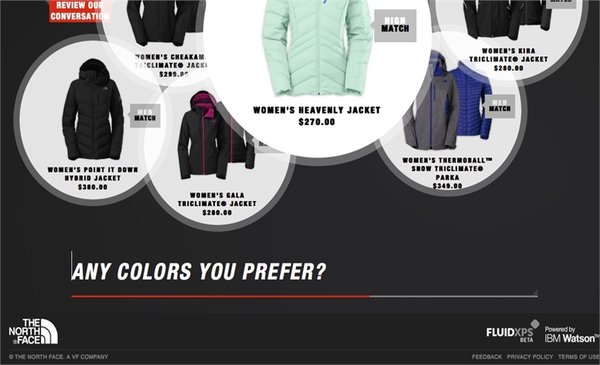Every time I step out of New Zealand and into a big economic region, the two things I notice are the crowds and the scale. Looking out over row after row of A380s parked on tarmacs, wrestling for room on a crowded street in a busy Asian city or seeing the world go about its business in a towering CBD, the immensity of humanity and the pace at which life operates is immediately apparent.
Recently I was struck by something else. Quite literally, at the other end of the scale. I was on a train traveling back into Kuala Lumpar from a meeting when I noticed that everybody around me had on headphones – everybody – and to a man, woman and teenager, they were wearing a look that said “Disconnected from the world”. (Of course that doesn’t just happen in Malaysia. I just happened to particularly notice it on this journey.)
And I remember thinking at the time – I wonder why that is? Were they looking to keep the rest of the world away, or were they in fact taking advantage of the opportunity to lock in some time to themselves? Perhaps both. Perhaps neither. It’s strange isn’t it how we are now at a point where technology allows us to be private in public and then public in private within minutes of each other? And the fact that we might want to do both, and feel quite at home doing so, defies simplistic logic.
Which is exactly the point. We’re not logical – and that leads me, in a lateral way, to Walker Smith’s recent Branding Strategy Insider post about Big Data. The numbers we derive from big data don’t lie, but our readings as brand marketers of what that data really means can be seriously misleading. As Walker says, the presumption is that more data means better marketing. Where we go wrong is what we do with the information we receive. “Humans have a hardwired, built-in propensity for seeing patterns … We are still inclined to see patterns or connections where none exist, a problem that is particularly perilous when we are working with large datasets to make important policy or business decisions.”
Absolutely. Big data delivers big patterns, but of course the patterns that make sense to each of us as individual consumers are much more mercurial. Big data matters for the big picture, but it’s a dangerous predicate on which to encourage individual action.
I read an interview with a screenwriter once in which he said that his greatest challenge was to find ways and reasons for his characters to behave in ways that were out of character. It was in those moments that they did things that defied logic and pattern, he said, that he was able to inject depth, dimension and humanity. It was the actions that didn’t make sense that made the character make sense as a person to the audience.
Brand marketers need to be doing more of that. Stop making sense. One of the great challenges we face is appealing to the unleashed side of consumers, the instinctual aspect. It’s not easy getting to grips with the fact that they won’t always behave in the ways we think they should, that they will do the unexpected, the unpatterned, the illogical, the unprecedented and the unresearchable – and that they are all the more exciting and interesting as people because of that. Tapping consumers’ wish for whimsy and their expression of freedom in appealing ways is what separates the greats from the also-brands.
That’s not happening – or at least, not as much as it should. Back to Walker’s article. Research he quotes reveals only 23 percent of all marketing professionals say they are “highly effective” at building value through new insights and only 32 percent feel that they are highly effective at engaging individual customers. “Big Data alone won’t improve any of this. Indeed, more data will make all of it worse if brand marketers put it to use unscientifically,” he observes.
No-one wants to be marketed to as a demographic, a trend or a generalization. Big data reveals the big currents that move whole societies. But brands must focus on the unsaid motivations that push “me” to act in “my world”. We are not starlings. We live in a big context – but we act in increasingly individual ways.
And that points to a fantastic opportunity for those looking for another level of value advantage. Developing brands, products and ideas that hand customers disruptive influence – the ability to inject personality, privacy and even rebellion, their way, within their world. Whether it makes sense to anyone else at all – or not.
There’s no shortcut to achieving this. It requires observation – up close, specific, patient, unobtrusive examination of the “human condition” at work.
Ever watched, really watched, people standing in a queue?
It’s just about waiting, right?
Actually, no. Depends where they are. Depends what they’re waiting for.
This fascinating article observes how the queue has changed as a phenomenon in Britain, a country renowned for queuing. The queue has, at various times, been a symbol of nationalism, poverty, opportunism, urbanization, duty, injustice, patience and tradition. And what a queue is, and how a queue works remains variable to this day. Observes Dr Michael Sinclair, “The people who push to get on a bus are the same people who wait patiently in other queues … The difference is the bus queue people have to enforce the rules themselves. This is when the system can break down. We all want things to be done the way we’d like, the problem is people have different ideas of what that should be.”
It’s a system? … Really? No amount of data will explain that.
And to Walker’s point, you can’t second-guess that. But once you know that, you can do things with that understanding that others can’t or won’t. Say, for example, your brand experience involves some element of queuing. Knowing that X people will wait X minutes, based on a study of a million queues, is useful as data, but understanding, at a human level, how individuals are feeling as they wait is critical to doing something about it (before, during or after) that works for the customers not just your operations.
What great brands do is they find their way to those little insights. The solutions that follow may not make sense logically but they absolutely win people over emotionally. They work from a behavioral perspective. They affect people personally, not just collectively.
So when someone tells you about the next big thing happening in your sector based on all the data, take note of course. But then, I suggest, ask yourself the companion question: what’s the next little thing? Because knowing that will reveal what your customers will react to.
The Blake Project Can Help: The Brand Positioning Workshop
Branding Strategy Insider is a service of The Blake Project: A strategic brand consultancy specializing in Brand Research, Brand Strategy, Brand Licensing and Brand Education





2 comments
J Walker Smith
September 21, 2013 at 11:57 am
Thanks, Mark, for your insightful, nuanced reading of my Branding Strategy Insider blog post.
I am particularly struck by your idea of little things in the mix of Big Data, and the bigger opportunities for brands that focus more on the individual within the mass than on a mass of individuals. I’m still chewing on that interesting, provocative idea.
Let me offer a parallel thought to your idea that Big Data gloss over the individual experience by which people engage their lives, and thus brands, too.
My thought is this. Big Data not only describe a group of people; they influence that very group of people. Google Flu Trends was a brilliant Big Data analytics innovation, but over time, the knowledge and publicity about flu-related search behaviors has influenced rates of the disease. Admittedly, it’s mostly for the better — people go out and get vaccinated. But it profoundly affects forecast accuracy. Now, maybe these forecasts will improve with a better understanding of feedback loops, but my thought is not about accuracy. It’s about Big Data affecting little behaviors, in your sense of the term, Mark. I guess what I’m suggesting is an echo of your conclusion — the most important thing about Big Data can only be seen at the micro-level. So if our perspective on consumers gets distorted by Big Data, we’ll be overlooking the most important part of the equation for brand marketers. This is, as you say, Mark, “the next little thing.”
I guess my only caveat would be that we do all of this with scientific principles in mind. Even a small view can be misleading if we don’t discipline our thinking. But that said, I agree that an over-exuberant, unquestioning embrace of Big Data can mean big problems in big ways. As you counsel, let’s not forget “personal” as we build up bigger databases of the “collective.” Thanks!
Will Young
October 14, 2013 at 11:52 pm
Nice article that calls for an holistic interpretation of data that requires a ‘so what?’ In order to be truly effective in providing an improved customer experience.
As a Brit, I think the queuing reference is spot on! Got me thinking about extremes: take the way we queue for Wimbledon vs. the way we queue for an emergency purchase at a local c-store. Body language perhaps tells you more than stats?
Comments are closed.